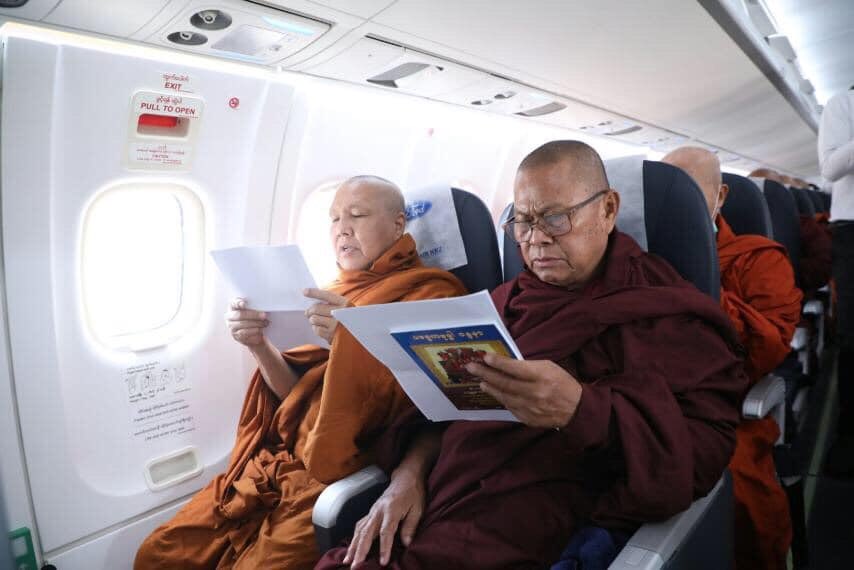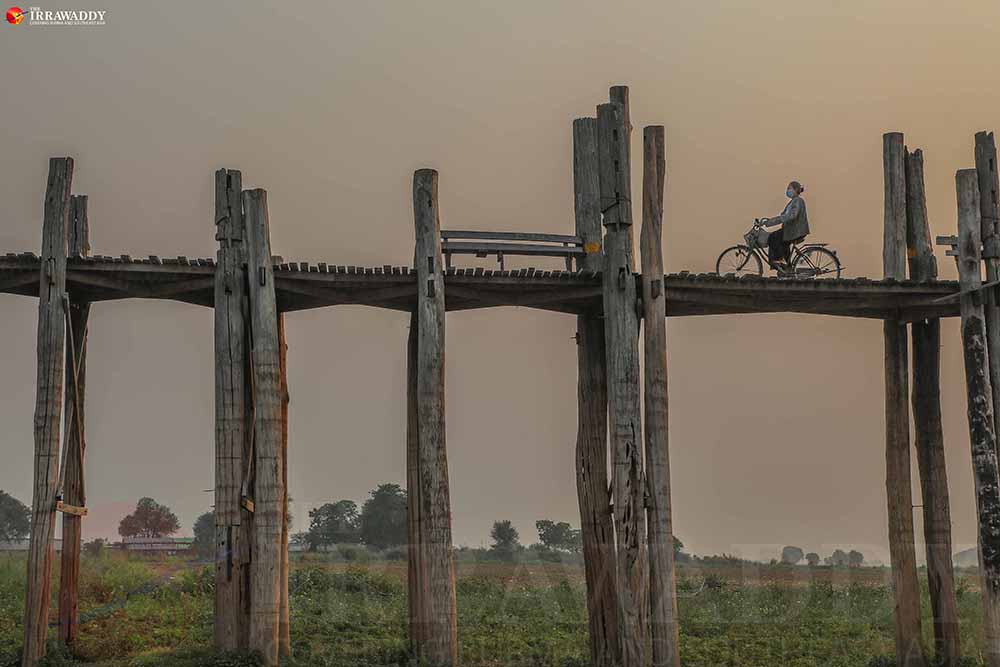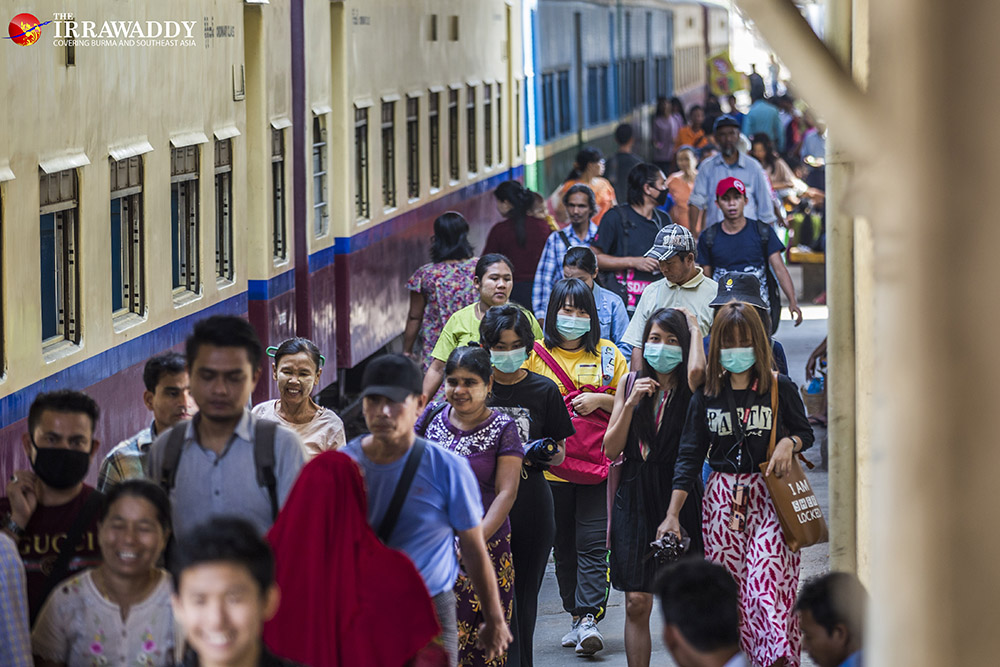Myanmar now has 20 confirmed cases—including one fatality—of COVID-19, and the number is slowly climbing.
With the number sure to rise, the government and military are preparing facilities for confirmed and suspected patients throughout the country. Experts and officials say the coming two weeks will be critical.
Still, compared to neighboring Thailand, where the government has recorded over 1,800 cases, the number of coronavirus-positive patients in Myanmar is still relatively low.
The trouble is that without testing we cannot get a true picture of the number of infected people in the country. Many fear that Myanmar does not have sufficient medical facilities to treat all those who would be affected in the event of a severe outbreak. On March 17, the UK Embassy in Yangon advised all British nationals in Myanmar to leave the country if possible, due to the potential pressure on medical facilities from COVID-19 and the risk that flights departing the country would be canceled.
The fear is valid—Myanmar is a poor country. But before the country’s first confirmed cases were reported, Myanmar celebrities, wealthy tycoons, CEOs and well-known monks mobilized and educated communities across the nation about the dangers of the virus; thanks to mobile and internet connections, they were able to reach communities in ethnic states. Private media have also played an important part in informing the public, providing up-to-date news from around the world and daily discussions and interviews on the virus.
While some prominent monks began preparing large-scale quarantine facilities at monasteries and temples, others, led by the revered Bhamo Sayadaw, the chairman of the State Sangha Committee—the nation’s highest-ranking religious authority—hopped into an airplane, took their seats (observing the appropriate social distancing) and began chanting Paritta (protection) Buddhist scriptures to ward off evil—in this case, the virus.

On the ground, authorities encouraged people to stay indoors and work from home. The streets of Yangon and other major cities are deserted, and neighbors keep an eye out and alert the local authorities if any unfamiliar faces enter the area. In Mandalay, people have become concerned about the presence of unregistered Chinese and other foreigners, leading to panic and anger in some quarters.
Some migrant workers returning to Myanmar from Thailand have been ordered into quarantine for 14 days. Myanmar’s Ministry of Health and Sports warned on Sunday that the country is at very high risk of a “major outbreak” of COVID-19, due to the large numbers of migrant workers crossing the border from the neighboring country.
There are reports that some of the returnees are staying outside villages in temporary, makeshift quarters and DIY huts. Those who refuse to be quarantined are taken to the local authorities. Some have attempted to flee quarantine facilities only to be tracked down and arrested.
Data collection can be difficult in Myanmar, but health workers and local authorities are doing their best to keep track of travel histories and the background information of suspected COVID-19 patients, emulating the systems used in South Korea and Taiwan.
Military in charge
Last Monday the government formed a COVID-19 Control and Emergency Response Committee, led by military-appointed First Vice President U Myint Swe. The committee comprised the military-appointed defense, border affairs and home affairs ministers, along with the chiefs of staff of the army, navy and air force.
This new committee also includes the civilian ministers of labor; immigration and population; religious affairs and culture; transport and communications; and social welfare, relief and resettlement. It does not include the health minister.
This indicates a degree of coordination between the government and military. The secretaries of the new committee will be based at the Home Affairs Ministry and will monitor and respond to emergency situations as they arise. So this could represent a new dynamic in civil-military relations in Myanmar, where the military continues to play a leading role in national politics.

Myanmar State Counselor Daw Aung San Suu Kyi still chairs the National-Level Central Committee on Prevention, Control and Treatment of Coronavirus Disease 2019 (COVID-19), which includes the health minister. This committee is tasked with implementing prevention and treatment measures.
Should a lockdown, home quarantine—or even a curfew—be ordered, the military will no doubt be effective in enforcing it. It has some experience in such tasks, albeit under very different circumstances.
In an indication of the seriousness with which Thai authorities are treating the outbreak there, the country is implementing a nationwide nighttime curfew from 10 p.m. tonight.
Myanmar President U Win Myint is still missing in action, but in case of an emergency situation he could order the military to impose a curfew. He could also declare a state of emergency—a power the State Counselor does not have.
Death toll rises in Rakhine
Along with Laos, Myanmar was one of the regional latecomers to the coronavirus club, declaring its first confirmed case of COVID-19 on March 23. But the country is already confronting a homegrown crisis in northern Rakhine and Chin states, as bloody clashes continue between insurgents and Myanmar armed forces almost daily. Over the last two months, it is not the virus but the escalation of the conflict that has taken many lives in northern Rakhine State.
Western ambassadors from 18 foreign missions in Myanmar have called for an end to armed conflicts between the Myanmar military and non-state armed organizations amid the COVID-19 pandemic, urging both sides to focus on “protecting the most vulnerable communities from the devastating impacts of COVID-19.”
The statement echoed UN Secretary General António Guterres’s earlier statement pleading for a halt to all armed conflicts so that nations can focus on the crisis.
“The fury of the virus illustrates the folly of war”, Guterres said. “That is why today, I am calling for an immediate global ceasefire in all corners of the world. It is time to put armed conflict on lockdown and focus together on the true fight of our lives,” he said, according to a UN News report issued on March 23.
The sad fact is that a lockdown is needed in northern Rakhine to save lives by containing the escalation of the armed conflict there—not the virus. As we face the COVID-19 situation in the country, isn’t it time to call for a nationwide ceasefire?
Isn’t it time for leaders to swallow their pride and ego, and choose the path of compromise? Isn’t this the time for unity? It is shameful to see how the country’s leaders are divided, precisely when the people most need them to be united.

In any case, how many in Myanmar will pay attention to the UN and heed its call to end the conflict?
This week, the UN leader called the coronavirus pandemic the most challenging crisis since the organization’s founding after World War II. But there has been a notable absence of global leadership during this crisis.
Rick Gladstone, a New York Times columnist, chided the UN, saying, “But the Security Council, its most powerful arm, has been conspicuously silent,” accusing the UNSC of being missing in action.
Still, many Myanmar people are glued to their screens, following coronavirus-related news and events from around the world as growing numbers of patients in the US and Europe die from the deadly disease. As developed countries face mounting challenges and struggle to control and contain the virus, many are asking, “What if we have an outbreak here?” This is the constant thought at the back of many people’s minds in Myanmar today.
Containing the spread of COVID-19 poses a real test and challenge for governments around the world, and Myanmar is no exception. It remains to be seen how well the government and authorities will be able to contain the spread of the disease and mitigate its effects on the nation’s health and economy.
You may also like these stories:
As COVID-19 Arrives in Myanmar, Individual Responsibility, Competent Leadership Needed
A Fierce Battle in Western Myanmar Has Killed Hundreds as the Country Braces for COVID
NLD Government No Match for Myanmar Military Chief on Charter Change

















